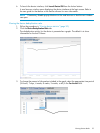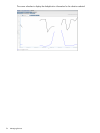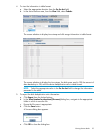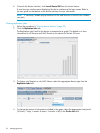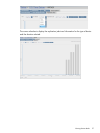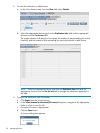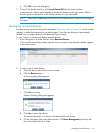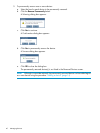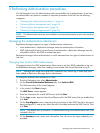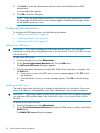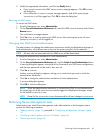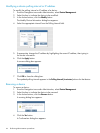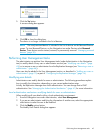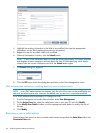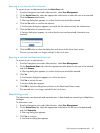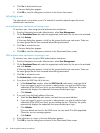
5 Performing Administration procedures
On the Navigation tree, the Administration tasks are available only to administrators. From here,
the administrator can perform a number of important procedures which fall into the following
categories:
• “Managing the Authentication Mechanism ” (page 41)
• “Performing Device Management tasks” (page 43)
• “Performing User Management tasks” (page 45)
• “Performing Group Management tasks” (page 49)
NOTE: The Administration tasks are not available to and cannot be seen by anyone with user-level
permissions.
Managing the Authentication Mechanism
Replication Manager supports two types of authentication mechanisms:
• Local authentication—Replication Manager stores the authentication information.
• LDAP (Lightweight Directory Access Protocol) authentication—Replication Manager uses the
information stored in the LDAP to authenticate users.
Replication Manager allows administrators to switch between these two types of authentication at
any time.
Changing from local to LDAP authentication
Changing from local to LDAP authentication allows users to use their LDAP credentials to log into
the Replication Manager, rather than needing to use another User Id and Password to log in.
NOTE: Although users might have valid LDAP credentials, they cannot log in unless they have
been added to Replication Manager by the administrator.
To change the authentication mechanism to LDAP:
1. From the Navigation tree, select Administration.
2. On the Current Authentication Mechanism tab, click Switch to LDAP.
The Welcome screen of the wizard appears.
3. In the wizard, click Next to begin.
The LDAP Server screen appears.
4. Enter the information for a valid LDAP server and click Next.
5. On the Login screen, enter the User Id and Password for the LDAP server that you added, then
click Next.
6. On the User Migration screen, map the existing local users to their LDAP User Ids in the server
being configured. To map a user, select the user in the table and enter the LDAP User Id. Then
click Next.
NOTE: The default user hprmsadmin is authenticated using local authentication and is not
included in this list.
7. On the Summary screen, review your information. You will not see the login credentials you
provided.
Managing the Authentication Mechanism 41



